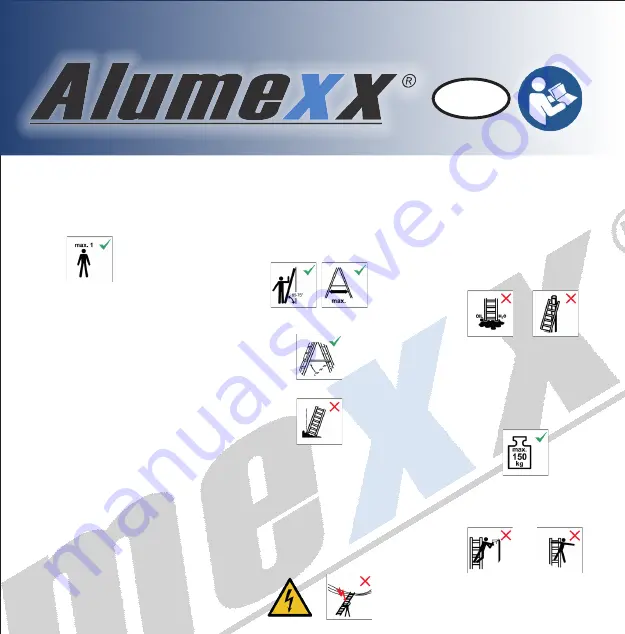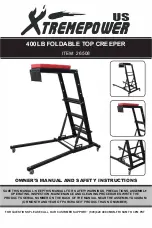
B 000189
1. Before use
A)
Ensure that you are fit enough to use a ladder.
Certain medical conditions or medication, alcohol
or drug abuse could make ladder use unsafe;
B)
When transporting ladders on roof bars or in a
truck, ensure they are placed suitable to prevent
damage;
C)
Inspect the ladder after delivery and before first
use to confirm condition and operation of all parts;
D)
Visually check the ladder is not damaged and is
safe to use at the start of each working day when
the ladder is to be used;
E)
For professional users regular periodic inspection
is required;
F)
Ensure the ladder is suitable for the task;
G)
Do not use a damaged ladder;
H)
Remove any contamination from the ladder, such
as wet paint, mud, oil or snow;
I)
Ladders shall not be positioned on slippery
surfaces (such as ice, shiny surfaces or
significantly contaminated solid surfaces) unless
additional effective measures are taken to pre-
vent the ladder slipping or ensuring contaminated
surfaces are sufficiently clean.
J)
The ladder must be positioned in a way that
the green arrow will be pointed to the top
B)
Locking devices, if fitted, shall be fully secured
before use;
Ladder shall be on an even, level and unmoveable
base;
C)
Leaning ladder should lean against a flat non-
fragile surface and should be secured before use,
e.g. tied or use of a suitable stability device;
Ladder shall never be repositioned from above;
When positioning the ladder take into account risk
of collision with the ladder e.g. from pedestrians,
vehicles or doors. Secure doors (not fire exits) and
windows where possible in the work area;
Identify any electrical risks in the work area, such
as overhead lines or other exposed electrical
equipment;
D)
E)
F)
G)
Ladder shall be placed on its feet, not the rungs
or steps;
Ladders shall not be positioned on slippery surfaces
(such as ice, shiny surfaces or significantly
contaminated solid surfaces) unless additional
effective measures are taken to prevent the ladder
slipping or ensuring contaminated surfaces are
sufficiently clean.
H)
I)
3. Using the ladder
Do not overreach; user should keep their belt
buckle (navel) inside the stiles and both feet on
the same step/rung throughout the task;
B)
Do not exceed the maximum total load for the
type of ladder;
A)
The ladder must be positioned in the way that the
green arrow will be pointed to the top;
J)
ENG
Instruction manual
2. Positioning and erecting
the ladder
A)
Ladder shall be erected at the correct position,
such as the correct angle for a leaning ladder
(angle of inclination approximately 1:4)
with the
rungs or treads level and complete opening of
the A-standing ladder;

















